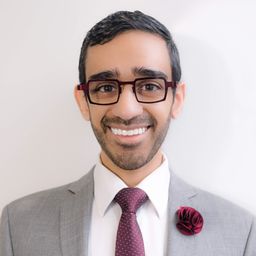Frequency and source of eyeglass insurance coverage in Ontario: Results from 2003 to 2014
Mon statut pour la session
Authors: Prem Nichani, Graham E. Trope, Yvonne M. Buys, Samuel
N. Markowitz, Sophia Liu, Gordon Ngo, Michelle Markowitz, Ya-Ping Jin.
Author Disclosure Block: P. Nichani: None. G.E.
Trope: None. Y.M. Buys: Membership on advisory boards
or speakers’ bureaus; Bausch and Lomb. All other investments or relationships
that could be seen by a reasonable, well-informed participant as having the potential
to influence the content of the educational activity; Argentum Pharmaceuticals,
Consultant. S.N. Markowitz: None. S. Liu: None. G.
Ngo: None. M. Markowitz: None. Y. Jin: Funded
grants or clinical trials; Kensington Eye Institute Research Fund, Glaucoma
Research Society of Canada.
Abstract Body:
Purpose: To (1) determine the frequency and source of
eyeglass insurance coverage in Ontario and changes from 2003 to 2013/14; (2)
examine socio-demographic factors associated with eyeglass insurance; and (3)
investigate if having eyeglass insurance is associated with increased
utilization of eye care providers in a public-funded healthcare system.
Study Design: Cross-sectional survey.
Methods: Data from Ontariorespondents aged 12+ to the
Canadian Community Health Survey in 2003 (n=42,777), 2005 (n=41,766) and
2013/14 (n=42,553) was analyzed.
Results: Overall, insurance covered all or part of the cost of prescription
eyewear for 62.3% of Ontarians in 2003, 62.1% in 2005, and 62.0% in 2013/14. In
2005, 86% of those covered had employer-sponsored insurance, 9% had
government-sponsorship, and 6% had a private plan. Corresponding numbers were
84%, 10% and 7% in 2013/14. From 2005 to 2013/14, government coverage increased
from 29% to 42% (p<0.0001) for Ontarians without secondary school graduation
and from 30% to 38% (p<0.0001) for those with household income under
middle-level. Employer-sponsored coverage remained unchanged (92%) for
individuals with household income above middle-level but decreased from 67% to
55% (p<0.0001) for Ontarians without secondary school graduation and from
64% to 53% (p<0.0001) for those with under middle-level income. An estimated
4.2 million Ontarians did not have any source of insurance in 2013/14. In all
survey years, factors associated with having insurance were age younger than
65, post-secondary graduation, household income above middle-level, aboriginal
status, and those in married/common-law relationships. In age groups with
routine eye exams insured by government, having eyeglass insurance was
associated with a significantly higher chance of visiting eye care providers in
both bivariate and multiple regression analyses, with a difference in visiting
eye care providers of 6% for the 12-19 age group and 7% for the 65+ age group.
In age groups without government-insured routine eye exams, the difference in
visiting eye care providers between those with and without eyeglass insurance was
larger: 15% for the 20-39 age group and 11% for the 40-64 age group.
Conclusions: Eyeglass insurance coverage was 62% in Ontario and
varied little from 2003 to 2013/14. The largest source of insurance was
employer-sponsored, primarily covering high income earners;
government-sponsored insurance significantly increased in lower income and
education groups in recent years. Over 4 million Ontarians had no insurance in
2013/14 and were vulnerable to cost barriers for eyeglasses. Having eyeglass
insurance was associated with significantly increased utilization of eye care
providers.
